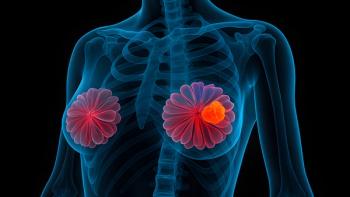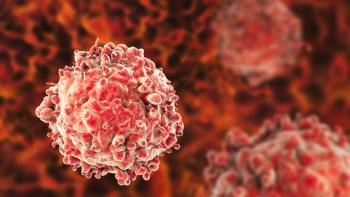
One-Third of US Cancer Survivors Report Financial or Work-Related Hardship
Approximately one-third of cancer survivors in the US reported a financial problem or the need to modify work plans.
Approximately one-third of cancer survivors in the US reported a financial problem or the need to modify work plans, according to the results of a large survey presented at the 2014 Palliative Care in Oncology Symposium. Women, racial/ethnic minorities, younger survivors, and uninsured survivors were all disproportionally affected by these hardships.
The survey of 1592 survivors showed that 27% reported at least one financial problem, while 37% reported a work-related hardship.
Cancer-related financial hardships included incurring debt, filing for bankruptcy, borrowing money, making sacrifices, and worrying about paying medical bills. Work hardships included changing to a flexible schedule or less demanding job, extending or taking unpaid leave, not accepting a promotion, delaying retirement, and taking an early retirement.
“Cancer survivors are at increased risk of financial hardship,” Robin Whitney, RN, BSN, lead study author, cancer survivor, and PhD student at the Betty Irene Moore School of Nursing, University of California, Davis, said at a presscast held in advance of the symposium. “This is important not only because it can affect their quality of life, but also because individuals with more financial stress are more likely to delay or forgo needed medical care, which can put their health at risk.”
This analysis focused on a subset of cancer survivors surveyed in the 2011 Medical Expenditures Panel Survey Experiences with Cancer Survivorship Supplement.
Predictors of financial burden included active treatment, age, insurance status, health, and race/ethnicity. Patients undergoing active treatment experienced 92% more difficulties (odds ratio [OR] 3.2; 95% CI, 2.1-5.0), patients under age 65 experienced 130% more difficulties (OR 2.4; 95% CI, 1.7-3.3), and patients without insurance experienced 67% more difficulties (OR 2.4; 95% CI, 1.3-4.4). Minorities were also disproportionally affected: nonwhite patients experienced 41% more difficulties (OR 1.6; 95% CI, 1.1-2.3) than their white counterparts.
Female patients experienced 30% more work modifications (OR 1.5; 95%, CI 1.1-2.2) than their male counterparts, though the difference was not statistically significant. Nonwhite patients experience 54% more modifications (OR 1.7; 95% CI, 1.1-2.6) that their white counterparts, whereas patients undergoing active treatment experienced 40% more work modifications than those who were at least 5 years removed from treatment (OR 2.9; 95% CI 1.7-4.9). Patients with worse health were also more likely to make a work modification, Whitney noted in the presscast.
“Screening and support for these issues may be an important part of cancer care, not only during active treatment, but across the entire survivorship trajectory,” Whitney said. “Additional interventions might benefit groups who are at higher risk of having these problems, such as minorities, younger survivors, women, those without insurance, and those with worse overall health.”
This analysis was the first to examine financial hardship disparities in a nationally representative group of cancer survivors, the authors noted. Overall, 47% of survivors surveyed were younger than age 65, 56% were female, 88% were white, and 4% did not have health insurance. Regarding treatment status, 14% were in active treatment, 46% were less than 5 years removed from treatment, and 39% were at least 5 years post treatment.
As there are currently 12 million cancer survivors and over 18 million projected survivors by 2020, Jyoti D. Patel, MD, highlighted the need for new strategies to combat financial and work-related hardships. Patel is ASCO’s expert on the Symposium News Planning Team.
“As we deal with the consequences of treatment and therapy, we need to find creative ways to lessen some of these hardships,” Patel said.
Whitney RL, Bell J, Reed S, et al. Work and financial disparities among adult cancer survivors in the United States. Presented at: 2014 Palliative Care in Oncology Symposium; October 24-25, 2014; Boston, MA. Abstract 238.
<<< View more from the Palliative Care in Oncology Symposium
Newsletter
Knowledge is power. Don’t miss the most recent breakthroughs in cancer care.















































































